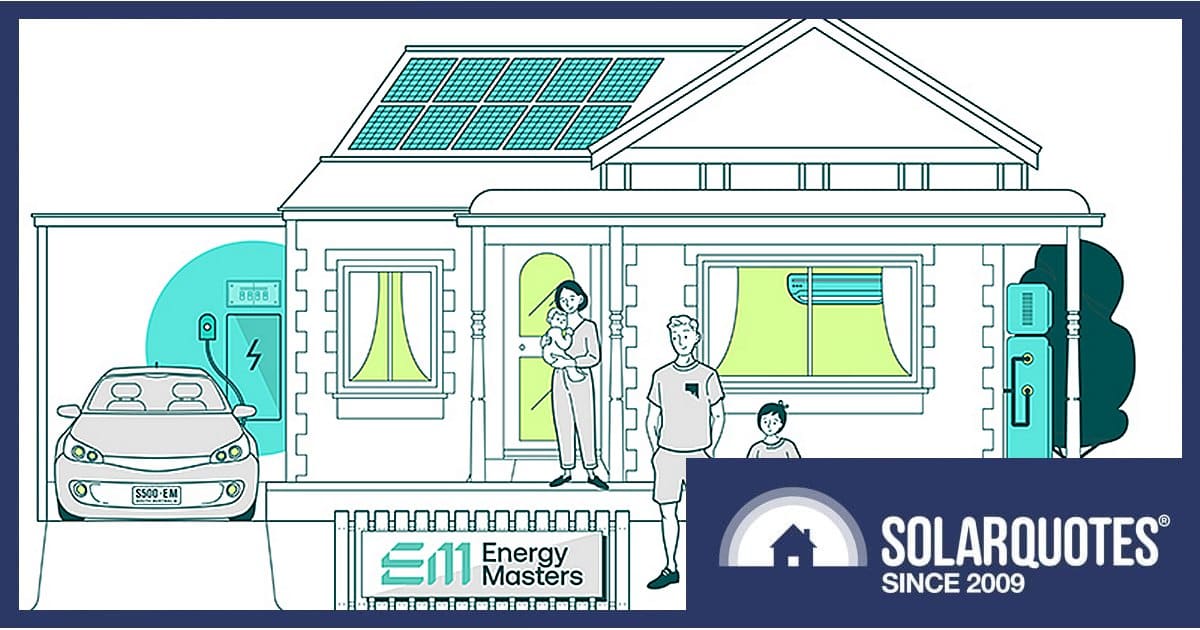
A call has gone out for SA households to register their interest in a trial involving electricity demand flexibility and smart electric homes.
Led by SA Power Networks (SAPN), 500 South Australian households will be selected to participate in the Energy Masters project, which is seeking to trial flexible appliances and home energy management technology, along with customer-focused flexible energy plans.
A demonstration of aggregated residential flexible demand, Energy Masters involves coordination of consumer energy resources (CER) and smart appliances to better match energy consumption to supply and respond to market signals, with a focus on shifting household energy use away from peak demand periods.
Households accepted into the trial will receive:
- A free Clipsal Cortex home energy management system (HEMS).
- Free access to the Cortex app that will enable control of key appliances, and monitor the cost of running them.
- Subsidies for new heat pump hot water systems, smart split-system air-conditioners and smart EV chargers, which SAPN says will cover 50-90% of the installed cost in most cases.
- Access to special electricity plans.
Introducing Flexible *Imports*
Some SA solar households would already be familiar with flexible exports, pioneered by SAPN. This is where rooftop solar export limits are set dynamically based on network conditions through signals sent remotely by SAPN to compatible internet-connected inverters.
As part of Energy Masters, SAPN will be trialing flexible *imports*; which could be considered a form of demand response (DR). This involves sending signals to households via the Clipsal Cortex HEMS device, which SAPN says will optimise energy consumption of designated flexible appliances; also based on network conditions. A flexible appliance, or load, is one where there is some wiggle room as to when it will be used – such as a pool pump or EV charger.
There will be financial incentives associated with flexible imports from SAPN, which will be passed on by electricity retailer partners Amber Electric and EnergyAustralia. However, households can participate while being a customer of another electricity retailer.
“Energy Masters households could save several hundred dollars for opting-in to flexible electricity use and optimisation via their HEMS,” says SAPN.
Energy Masters Goals
SAPN and its partners want to demonstrate how energy-smart homes could help to:
- avoid or delay electricity network infrastructure build costs.
- reduce the need and costs for new grid scale electricity generation and energy storage.
- improve efficiency in the electricity market.
- boost self-consumption of solar electricity by households with rooftop panels.
- reduce energy bills (and emissions) for everyone.
Registering Interest In Energy Masters
To ensure research is representative of as many South Australians as possible, the project team will select 500 households from expressions of interest rather than this being based on a first-in, best-dressed basis. But fifty places have been specifically reserved for low income and energy hardship households, and these participants will get higher subsidies.
Among the eligibility criteria is the willingness to have a smart meter installed (where one isn’t already in place) and to participate in research led by RACE for 2030 for up to 18 months, which will involve completing at least three research surveys. A deal-breaker is if anyone lives in the household with a medical condition relying on continuous supply of electricity to power critical medical equipment.
The Energy Masters website notes:
“Whilst there is an expectation of lower energy bills through Energy Masters, there is no guarantee and you should consider this before joining.”
The registration form and further information can be found here. Expressions of interest close Monday 2 December 2024, with selection outcomes expected late in December.
SA Power Networks is contributing $2.8 million to the initiative, with the Australian Renewable Energy Agency (ARENA) kicking in $6.2 million.
Commenting on the Energy Masters project when first announced by ARENA in May, ARENA CEO Darren Miller said:
“We’re working with SA Power Networks and the South Australian government to trial the coordination of CER in a real world setting while unlocking value for participating households, and look forward to seeing the outcomes of this trial and how its findings can be replicated across Australia.”

 RSS - Posts
RSS - Posts



Good grief. Any more buzz word generators and spin and the thing could power itself.
Here’s an idea. FIgure out how much energy the state needs on a windless night and plan the infrastructure needed to deliver that energy.
Nearly 40% of our electricity usage in an all electric house. is for resistive hot water,…it is preheated and stored for our use at any time. It matters not when it is heated as long as each couple of days it heats or partial heats.
Wouldn’t it be clever to utilise the load flexibility to times when power is surplus to the grids needs, rather than just lucky dip and overload the grid a windless hot night when demand is high and generation is low???